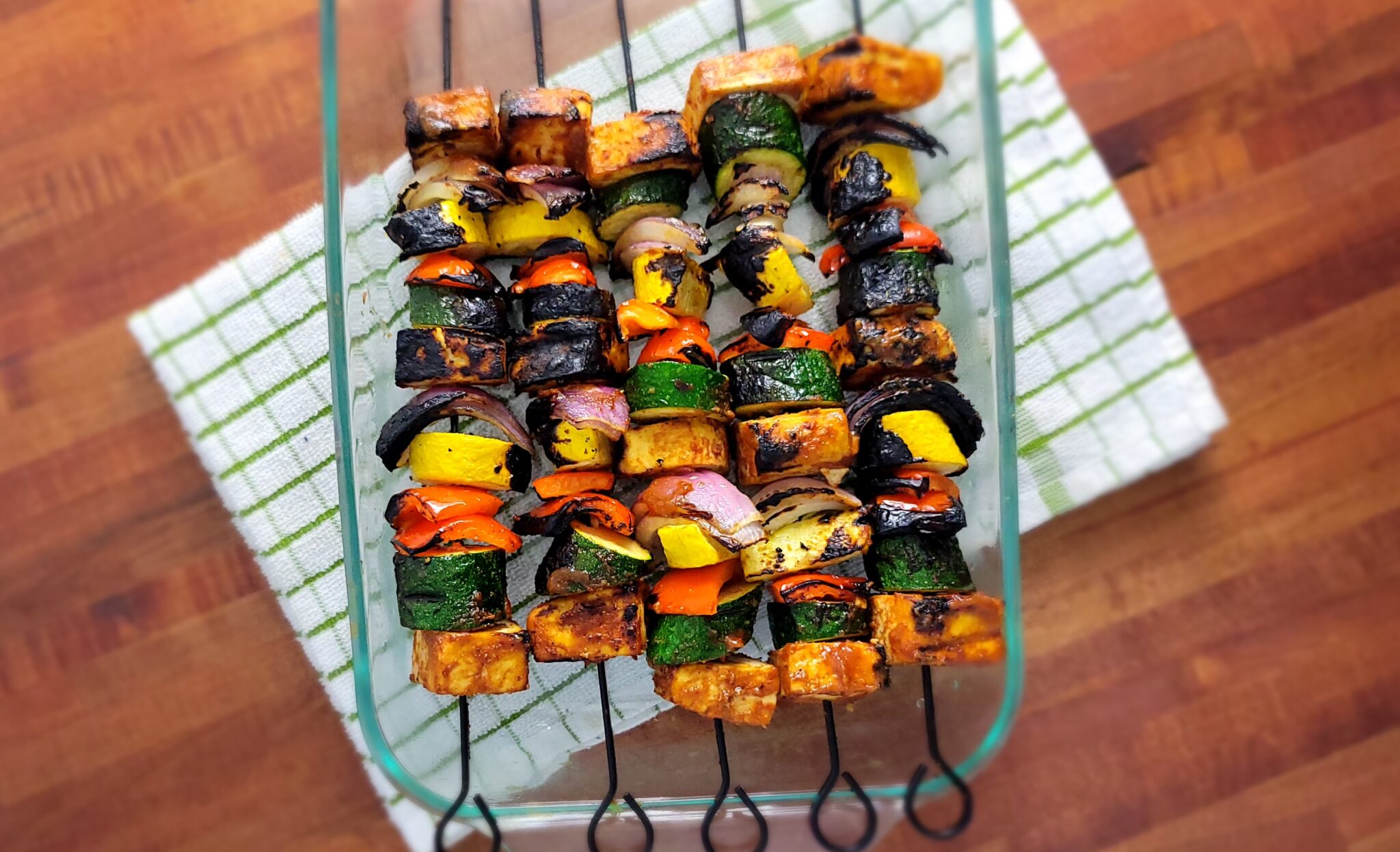Are you looking to start your garden but don’t know which plants would be good for your kidney health? This guide will reveal 15 delicious and easy-to-grow fruits and vegetables to add to your kitchen garden this spring—all tailored toward keeping your kidneys healthy! Read on to learn what these beneficial plants are, how they’ll help protect your kidney function, and discover tips for growing them right at home.
When it comes to kidney health, our diet plays a significant role. Your kidneys are responsible for filtering out waste and toxins from your bloodstream. You may have been told to watch out for potassium or phosphorus and are nervous that foods you will grow will make it hard for your kidneys. This is understandable; however, when researchers followed adult eating patterns over 20 years, they saw a lower risk of CKD and a slower decline in kidney function in people who followed a plant-based diet. [1] Research has also shown that, people who grow their own food eat more fruits and vegetables. [2] Choosing the right plants to grow can be overwhelming just remember to eat your harvested fruits and veggies in moderate servings.
Here are some things to take into consideration when planting a garden:
- Choose a location that gets plenty of sunlight (atleast 6 hours per day)
- Take into consideration water requirements.
- Find a location that you can protect from other hungry helpers ready for a snack.
- Pick a location that is easy for you to access so that you can maintain your garden.
- Select plants that are easy to grow (especially if you don’t garden much) and plants that will be ready to eat when is convenient for you.
Cucumbers
Cucumbers are a really fun vegetable to grow. The vines can grow up a trelse or in a cage and they have beautiful big green leaves. They require a fair amount of water but their plentiful harvest is worth it. Cucumbers are considered a “low” potassium vegetable which makes them ideal for someone who is on a potassium restriction. Plus, they’re incredibly versatile. You can slice them into a salad or sandwich, dip them into hummus or tzatziki, or pickle them for a tangy snack.
Carrots
Carrots are a great vegetable to plant with kids. They grow quickly and are satisfying to pick. They make great additions to salads, snack trays and roasted. They’re loaded with nutrients like vitamin A, which is great for our eyesight. They come in multiple colors. They should be picked 50 to 75 days after planting but make sure to follow the seed packet directions. The can be a little hard to grow because you do not know when to harvest them until after they are picked.
Snap Peas
Snap peas, also known as sugar snap peas, are a delicious and nutrient-packed vegetable that can be enjoyed in a variety of ways. These plants are pretty hardy and produce a large harvest. They make great snacks when eaten raw or add them to stir-fries. Steamed as a side dish snap peas are a tasty and versatile choice. These crunchy and sweet pods are rich in vitamins C and K, as well as fiber and protein, making them a great addition to a healthy diet. They are a plant-based vegetable power house!
Raspberries
Raspberries are a delicious treat that are grown from a bush. These small, flavorful berries are packed with nutrients and antioxidants that can help keep your body healthy and strong. They are considered “low” potassium and are a great addition to snack, desert or yogurt. Plus, they are low in calories and high in fiber, making them a great addition to any diet. So the next time you are looking for a refreshing and nutritious snack, be sure to grab a handful of raspberries and savor their delicious flavor!
Romaine Lettuce
Romaine lettuce is a great choice for your garden because it can be harvested whole or just pick a few leaves for your meal and the plant continues to grow. Romaine is a dark leafy green that is a good source of Vitamins C and K, potassium, phosphorus, calcium, and magnesium. Remember that plant sources of phosphorus are absorbed significantly less than animal or additive forms. If you are on a potassium-restricted diet; romaine has less than 200mg of potassium per 1 cup shredded lettuce. (3)
Garlic
Garlic has been a staple ingredient in cuisines all over the world for centuries. This bulbed plant is economical as you can simply break off a clove and plant. When planting, keep the fibrous husk on the outside and plant with the large portion of the bulb down and the point up. Garlic is a wonderful addition to any low-sodium diet as it has such a strong taste you do not need any salt. From roasted garlic spread to garlic-infused olive oil, there are countless ways to incorporate this flavorful bulb into your cooking.
Bell Peppers
Bell peppers are undoubtedly one of the most versatile and colorful vegetables out there. From red and yellow to green and purple, they add a pop of color and crunch to any dish. Whether you chop them up for a salad, stuff them with quinoa and vegetables for a hearty dinner, or slice them thin and use as a topping on your favorite pizza, bell peppers are a delicious and nutritious addition to any meal. They are even delicious to pick and eat right off the plant! (We do advise washing your harvest first)
Zucchini
When it comes to vegetables, zucchini is often overlooked. This unassuming green squash packs a surprising amount of flavor and versatility in the kitchen. Whether sliced, diced, or spiralized, zucchini adds a nutritious crunch to salads, stir-fries, and pasta dishes. It’s also a delicious and healthy substitute for carb-heavy ingredients like noodles or bread. Zucchini can be grilled, roasted, sautéed, or even baked into tasty muffins or bread. In a sunny spot, this plant can produce a bountiful harvest.
Onions
Onions are one of the most versatile and essential ingredients in any kitchen. Another vegetable that is a bulb. Is a lot of fun to harvest with kids or grandkids. Whether you’re sautéing them for a stir-fry, caramelizing them for a savory tart, or simply chopping them up for a salad, there’s no denying that onions add flavor and depth to just about any dish. Not only do they taste great, but they’re also packed with nutrients like vitamin C and fiber. Just like garlic, they are a great flavor booster, no salt required.
Eggplant
Eggplant is a vegetable that is known for its unique appearance and taste. Whether it’s roasted, grilled, or fried, eggplant adds a rich, savory flavor to any dish. Not only is it delicious, but it’s also high in fiber and can be used as a dip or a main dish, making it a great choice for anyone looking to eat healthy.
Radishes
Radishes are a great low-potassium choice for someone on a potassium restriction. They are also ideal for someone looking to harvest their hard work quickly. It takes approximately 4ish weeks for these veggies to be ready to be eaten. Radishes are also a good source of vitamin C, folate, and fiber. They are versatile in the kitchen, whether sliced thinly and added to a salad for a pop of color or roasted with garlic and herbs as a side dish.
Kale
Kale is one of our favorite vegetables. This leafy green can be added to soups (try our Tuscan Kale Soup), roasted, sauteed, blended, air-fried or used as salad greens. It is also a hardy plant that is great for the novice gardener. Just like romaine, you can also pick the leaves you need and let the plant continue to grown.
Strawberries
Is there anything better than an in-season strawberry? These low potassium fruits have the sweetest taste. They dress up any dish from oatmeal to salad to desert. These delicious fruits are also packed with nutrients and antioxidants, making them a healthy addition to any diet. They are best grown from small plants instead of seeds and are fun to harvest.
Basil
Basil is a another herb that can spice up a dish without the need for salt. With its fragrant aroma and bold flavor, basil adds a delightful touch to a wide range of dishes, from classic Italian pasta sauces to fragrant Thai curries. You can simply clip what you need and go. Just make sure to trim your plant to prevent the plant from flowering and reducing your harvest.
Jalapeno Peppers
Jalapeno peppers are a staple in spicy food lovers’ kitchens. There is no way you need any salt when you add these veggies to your meals. With their bright green color and signature heat, these peppers add a bold kick to any dish. They do best in a warm, full sun environment so make sure to save a sunny spot for these peppers.
Conclusion
When you have kidney disease it does not mean you can no longer grow and enjoy your own garden. These fruits and veggies are all great options for anyone following a kidney friendly diet. If you are someone who follows a potassium restricted diet; do not forget about portion control. Everyone can enjoys these plants and still follow a kidney friendly eating plan. Have more questions about how to include more plants into your meals or how best to cooks these plants? Join Us in our Pro-Membership and get your questions answered in our Ask the Expert Forum.
References
- Kim H, Caulfield LE, Garcia-Larsen V, Steffen LM, Grams ME, Coresh J, Rebholz CM. Plant-Based Diets and Incident CKD and Kidney Function. Clin J Am Soc Nephrol. 2019 May 7;14(5):682-691. doi: 10.2215/CJN.12391018. Epub 2019 Apr 25. PMID: 31023928; PMCID: PMC6500948.
- Kegler, M., Prakash, R., Hermstad, A., Williamson, D., Anderson, K., & Haardörfer, R. (2020). Home gardening and associations with fruit and vegetable intake and BMI. Public Health Nutrition, 23(18), 3417-3422. doi:10.1017/S1368980020001329
- Cukebook Food Analyzer – https://www.cukebook.org/nutrition/food-analyzer/

